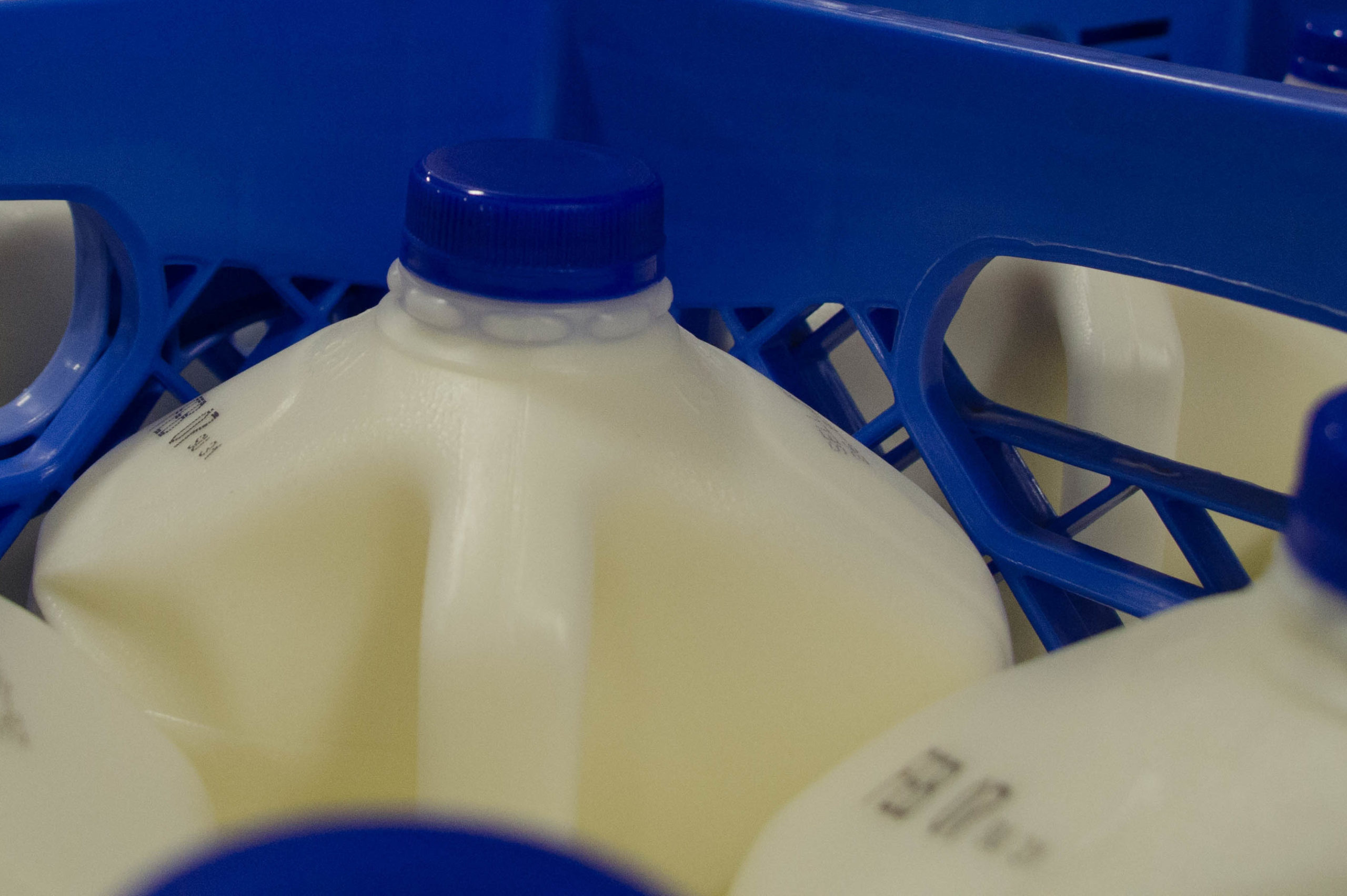It’s been nearly 500 days since the news broke about the Flint Water Crisis and residents are still not able to trust the water supply as the State of Michigan replaces the water pipes. It’s been 365 days since MMPA stepped in and delivered the first of three loads of 12,000 gallons of milk. But milk doesn’t rain down from heaven, so how did that donation process really happen?
On September 24th, 2015 a press conference was held in Flint, after the discovery of elevated lead levels in the residents of the impoverished city due to a poor water supply. The Flint Water Crisis had emerged as a daily headline on every level as the story of an unsafe water supply went viral and the political blame game began. As state and national officials began to unravel the mystery of the unsafe water supply, MSU Extension led by then interim Director Dr. Jeff Dwyer released valuable research that calcium, iron and vitamin C were the immediate solution in mitigating the effects of lead in the body as they play a key role in blocking lead absorption.
MMPA President Ken Nobis and Senior Director of Member and Government Relations Sheila Burkhardt were at a meeting with Dr. Jeff Dwyer when he outlined the findings of the role calcium played in blocking lead absorption and emphasized that milk was what the residents of Flint needed. After the meeting Nobis and Burkhardt had the same idea: a milk donation.
They left the meeting that January afternoon of 2016 with the intention to get the ball rolling on donating a large quantity of milk to the residents of Flint.
“Flint had warehouses full of bottled water but what they really needed was milk,” explained Nobis. “By the next morning, Sheila called me and said the deal was all but finished and I said, ‘Wait, I still need to get the board’s approval!’” Two hours later Nobis had everyone on board, ““There was no hesitation on the part of any board member about this donation. They knew it was the right thing to do.”
Carl Rasch, Director of Milk Sales contacted the longtime friend of MMPA, Kroger Company of Michigan and they were elated to donate the processing and packaging costs of the milk while Quickway Carriers took care of transportation costs.
“Within 24 hours of that meeting with Dr. Dwyer we had the deal done and within 96 hours, 12,000 gallons of two percent milk was sitting in the cold storage of the Food Bank of Eastern Michigan,” commented Nobis.
Initially Nobis was concerned with the storage and distribution of the milk, “We wanted to make sure the Food Bank of Eastern Michigan had enough room for 12,000 gallons of milk and that the milk went to the families in need.” He continued, “As it turned out, we hardly made a dent in their cold storage and the food bank staff knew exactly where the need was.”
A media event was held to spotlight the milk donation at the suggestion of Dr. Mona Hanna-Attisha, Director of Pediatrics at Hurley Children’s Hospital, the doctor credited with uncovering the lead poisoning in Flint residents. Hanna-Attisha wanted to make this a nutritional learning opportunity for people to become informed at the difference good nutrition makes in combatting lead poisoning.
The initial donation snowballed into two more donations of 12,000 gallons each to the Food Bank of Eastern Michigan where, according to Burkhardt, they were very appreciative and thrilled to get the donation into the hands of the families in Flint. She commented, “Each time we donated milk in 2016, (12,000 gallons at a time) the milk was distributed to the families within seven days. That’s a lot of milk and a lot of need.”
While Flint families were finally getting the power packed goodness of milk, dairy producers were being met with a downward spiral of milk prices. Nobis knew the MMPA membership would never shrink back from helping those in need, but he had no idea the reception he would receive when he stood at an MMPA local meeting just days after making the donation decision. “When I stood in front of the members of the Hillsdale-Litchfield local and told them about donating 12,000 gallons of milk it was silent and then suddenly they began to applaud. It was a great moment.”
Jamie Clover Adams, the Director of the Michigan Department of Agriculture and Rural Development was at that same local meeting and recalls, “What struck me then and stays with me even now was the genuine pride and delight I saw in that room from the claps to the expressions on their faces that they were helping people.” She continued, “Their reaction reminded me why I love agriculture and why I am so honored to have the opportunity to serve Michigan agriculture. Agriculture is made up of the most genuine, down to earth, caring people.”
Burkhardt was amazed at how quickly and smoothly the donation project came together, “It was exciting to see from the initial board approval to the commitment from Kroger to donate processing and packaging to Quickway donating the transportation.” She continued, “Within just over 24 hours of hearing how calcium helps mitigate the impact of lead in the body, everyone was on board to make the donation happen.”
Burkhardt concluded, “It made me very proud to be a part of an organization that was willing to step up and do their part to help the citizens of Flint as the water crisis unfolded. The entire MMPA family from members to employees were proud of this project.”
–Melissa Hart
This article was originally published in the January issue of the Michigan Milk Messenger.

